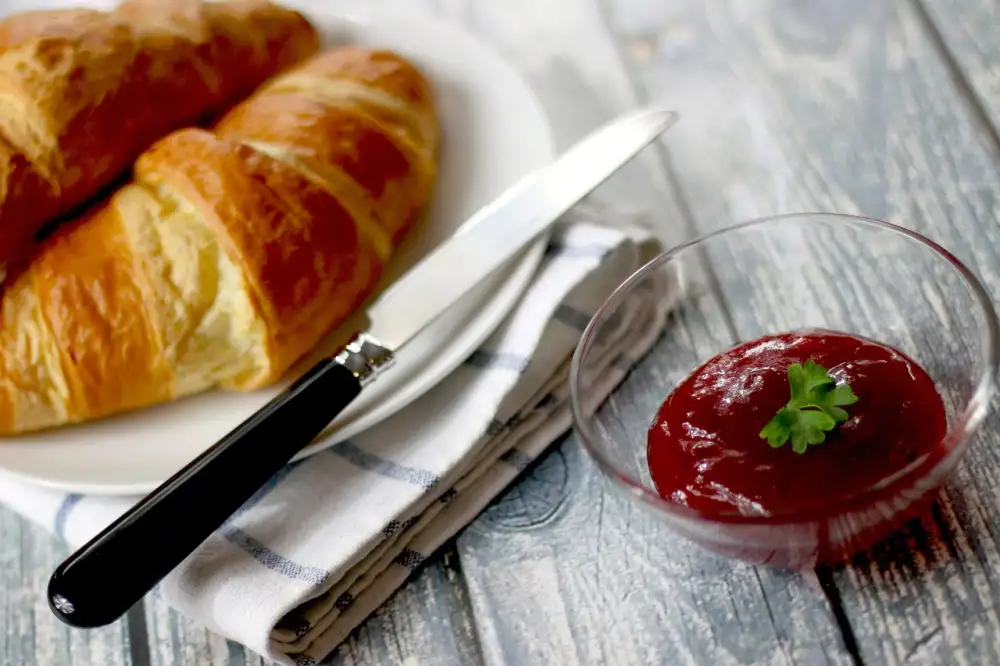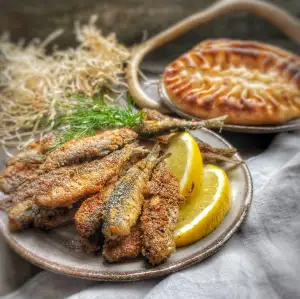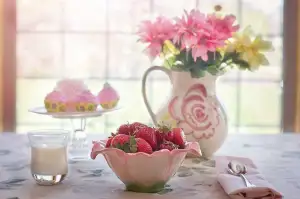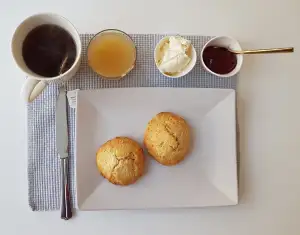Perfecting the Art of Puff Pastry: Elevate Your Culinary Skills with this Flaky Delight

- History and Origins of Puff Pastry
- Key Ingredients for Making Puff Pastry
- Step-by-Step Guide to Making Puff Pastry from Scratch
- Tips and Tricks for Working with Puff Pastry
- Popular Recipes Using Puff Pastry
- Variations and Creative Uses of Puff Pastry
- Health Benefits and Nutritional Value of Puff Pastry
- Frequently Asked Questions about Puff Pastry
Puff pastry is a versatile and delicate dough that has been a staple in the culinary world for centuries. Its light, flaky texture and buttery flavor make it a favorite among both professional chefs and home cooks. Whether used as a base for savory dishes or transformed into sweet treats, puff pastry elevates any recipe to new heights. In this article, we will explore the history, ingredients, techniques, and creative uses of puff pastry. Get ready to embark on a journey to culinary excellence as we delve into the art of perfecting puff pastry.
History and Origins of Puff Pastry
Puff pastry, with its delicate layers and flaky texture, has a rich history that dates back centuries. Its origins can be traced to ancient Egypt, where early versions of the pastry were made using a simple mixture of flour and water. However, it was the French who truly perfected the art of puff pastry.
In the 17th century, French pastry chefs began experimenting with different techniques to create a lighter and more airy pastry. They discovered that by incorporating butter into the dough and repeatedly folding and rolling it, they could achieve the signature layers and rise of puff pastry.
The technique quickly gained popularity throughout Europe, with each country adding its own unique twist to the recipe. In England, for example, puff pastry became a staple in traditional dishes like beef Wellington and sausage rolls.
Today, puff pastry is enjoyed worldwide and is used in both sweet and savory dishes. Its versatility and ability to elevate any dish make it a favorite among professional chefs and home cooks alike. The history of puff pastry is a testament to the ingenuity and creativity of culinary traditions passed down through generations.
Key Ingredients for Making Puff Pastry
The key to creating the perfect flaky and buttery puff pastry lies in using the right ingredients. Here are the essential components you'll need:
1. Flour: Use all-purpose flour or pastry flour for a lighter texture.
2. Butter: High-quality unsalted butter is crucial for achieving those delicate layers. It should be cold, but pliable enough to work with.
3. Water: Cold water helps create steam during baking, which contributes to the puffing effect.
4. Salt: Just a pinch of salt enhances the overall flavor of the pastry.
These four simple ingredients form the foundation of any good puff pastry recipe. By using high-quality ingredients and following proper techniques, you can elevate your culinary skills and create heavenly pastries that will impress even the most discerning palates.
Step-by-Step Guide to Making Puff Pastry from Scratch
1. Start by combining flour and salt in a large mixing bowl.
2. Cut cold butter into small cubes and add it to the flour mixture.
3. Use your fingertips to rub the butter into the flour until it resembles breadcrumbs.
4. Gradually add ice water, a little at a time, while mixing with a fork until the dough comes together.
5. Turn the dough out onto a lightly floured surface and knead gently until smooth.
6. Shape the dough into a rectangle and wrap it in plastic wrap. Chill in the refrigerator for at least 30 minutes.
7. Roll out the chilled dough on a lightly floured surface into a long rectangle about 1/4 inch thick.
8. Fold one-third of the dough over itself, then fold the other end over to create three layers.
9. Rotate the dough 90 degrees and repeat the rolling and folding process two more times, chilling in between if necessary.
10. After the final fold, wrap the dough in plastic wrap and refrigerate for at least an hour before using.
Follow these steps carefully to achieve light and flaky puff pastry that will elevate your culinary creations to new heights!
Tips and Tricks for Working with Puff Pastry
When working with puff pastry, it's important to keep a few tips and tricks in mind to ensure success. Firstly, always make sure your puff pastry is properly thawed before using it. This can be done by placing it in the refrigerator overnight or at room temperature for about 30 minutes.
To prevent sticking, lightly flour your work surface and rolling pin before rolling out the pastry. Be gentle when handling the dough to avoid compressing the layers.
To achieve that signature flakiness, it's crucial to keep the butter cold. If you notice it becoming too soft while working with the dough, simply place it back in the refrigerator for a few minutes.
When cutting shapes or making turnovers, use a sharp knife or pastry cutter to create clean edges. This will help the pastry rise evenly during baking.
For a beautiful golden color and crisp texture, brush the pastry with an egg wash before baking. This will also give it a glossy finish.
To prevent shrinkage during baking, prick the bottom of the pastry with a fork or weigh it down with parchment paper and pie weights.
Lastly, always follow recipe instructions regarding oven temperature and baking time. Puff pastry bakes best in a hot oven (around 400°F/200°C) for a short period of time.
By following these tips and tricks, you'll be well on your way to mastering the art of working with puff pastry and creating deliciously flaky treats!
Popular Recipes Using Puff Pastry
1. Classic Beef Wellington: Tender beef fillet wrapped in puff pastry with a layer of savory mushroom duxelles.
2. Spinach and Feta Triangles: Flaky triangles filled with sautéed spinach, feta cheese, and herbs.
3. Chicken Pot Pie: Creamy chicken and vegetable filling topped with a golden puff pastry crust.
4. Apple Turnovers: Sweet apple filling encased in buttery puff pastry, baked until golden and caramelized.
5. Cheese and Ham Croissants: Buttery croissants filled with melted cheese and ham for a delicious breakfast or snack.
6. Mushroom Vol-au-Vent: Delicate puff pastry shells filled with a creamy mushroom mixture.
7. Fruit Tartlets: Miniature tarts filled with fresh fruits and a luscious pastry cream.
8. Palmiers: Crispy palm-shaped cookies made by folding sugar into puff pastry and baking until caramelized.
These recipes showcase the versatility of puff pastry, making it perfect for both sweet and savory dishes that are sure to impress your guests or satisfy your cravings.
Variations and Creative Uses of Puff Pastry
Puff pastry is an incredibly versatile ingredient that can be used in a variety of sweet and savory dishes. Here are some creative ways to use puff pastry:
1. Classic Pastries: From fruit-filled turnovers to cream-filled eclairs, puff pastry is the perfect base for classic pastries. Its flaky layers provide a delightful contrast to the rich fillings.
2. Savory Tarts: Puff pastry makes a delicious crust for savory tarts. Top it with sautéed vegetables, cheese, and herbs for a simple yet flavorful dish.
3. Vol-au-Vents: These bite-sized puff pastry cups are perfect for elegant appetizers or canapés. Fill them with creamy seafood, mushroom duxelles, or chicken salad for an impressive presentation.
4. Palmiers: Also known as elephant ears, palmiers are sweet treats made by rolling puff pastry with sugar and folding it into a butterfly shape. They make a great accompaniment to coffee or tea.
5. Puff Pastry Pizza: Skip the traditional pizza dough and use puff pastry as the base instead. Top it with your favorite ingredients and bake until golden and crispy.
6. Puff Pastry Straws: Twist strips of puff pastry, sprinkle them with cheese or spices, and bake until golden brown for a tasty snack or appetizer.
7. Puff Pastry Quiches: Line muffin tins with squares of puff pastry and fill them with a mixture of eggs, cheese, vegetables, or meat for individual quiches that are perfect for brunch or parties.
8. Sweet Danishes: Create delectable danishes by filling squares of puff pastry with cream cheese or fruit preserves before baking until golden brown.
9. Puff Pastry Cinnamon Rolls: Roll out puff pastry, spread it with butter, cinnamon, and sugar, then roll it up and slice into individual rolls. Bake until golden and enjoy a flaky twist on the classic cinnamon roll.
10. Puff Pastry Samosas: Use puff pastry as a shortcut to make delicious samosas. Fill it with spiced potatoes, peas, or meat, fold into triangles, and bake until crispy.
With its light and airy texture, puff pastry can elevate any dish to new heights of deliciousness. Get creative in the kitchen and explore the endless possibilities of this versatile ingredient.
Health Benefits and Nutritional Value of Puff Pastry
Puff pastry, while undeniably delicious, is not typically associated with health benefits. It is a rich and indulgent treat that should be enjoyed in moderation. However, there are a few potential nutritional benefits to consider. Puff pastry contains small amounts of vitamins and minerals such as iron, calcium, and vitamin A. Additionally, the butter used in puff pastry provides a good source of healthy fats. Remember though, the high fat and calorie content means it should be enjoyed as an occasional treat rather than a regular part of your diet.
Frequently Asked Questions about Puff Pastry
1. Can I use store-bought puff pastry instead of making it from scratch?
Yes, you can use store-bought puff pastry as a convenient alternative. However, making it from scratch allows for more control over the quality and flavor.
2. How long does puff pastry last?
Puff pastry can be stored in the refrigerator for up to 3 days or frozen for several months. Make sure to wrap it tightly in plastic wrap or an airtight container to prevent drying out.
3. Can I freeze unbaked puff pastry?
Yes, you can freeze unbaked puff pastry. Simply shape it as desired, place on a baking sheet, and freeze until firm. Once frozen, transfer to a freezer bag or container for long-term storage.
4. How do I prevent my puff pastry from shrinking during baking?
To prevent shrinkage, make sure your oven is preheated properly and bake at a high temperature (around 400°F/200°C). Avoid stretching the dough when rolling it out and allow it to rest in the refrigerator before baking.
5. Can I re-roll puff pastry scraps?
Yes, you can re-roll puff pastry scraps but keep in mind that each time you re-roll the dough, it may lose some of its flakiness. It's best to plan ahead and cut your desired shapes carefully to minimize excess scraps.
6. Why does my puff pastry sometimes turn out greasy?
A greasy result could be due to using too much butter or not chilling the dough adequately between layers. Follow the recipe instructions precisely and ensure proper resting times in the refrigerator.
7. Can I use margarine instead of butter for a vegan version of puff pastry?
While margarine can be used as a substitute for butter in vegan recipes, it may affect the texture and flavor of your puff pastry. Look for non-dairy butter alternatives specifically made for baking.
Remember, practice makes perfect when it comes to mastering puff pastry. Don't be discouraged if your first attempts aren't flawless – with time and patience, you'll be creating beautifully flaky pastries that will impress everyone at your table.
In conclusion, mastering the art of puff pastry can truly elevate your culinary skills and impress your guests with its flaky delight. With a rich history and origins dating back centuries, puff pastry has stood the test of time as a versatile and delicious pastry dough. By understanding the key ingredients, following a step-by-step guide, and incorporating tips and tricks for working with puff pastry, you can create beautiful and mouthwatering pastries. From classic recipes like croissants and palmiers to innovative variations such as savory turnovers and sweet tarts, there are endless possibilities to explore with puff pastry. Its light texture and buttery taste make it a favorite among chefs and food enthusiasts alike. While indulging in these delightful treats, it's important to remember that moderation is key due to its high-fat content. However, when enjoyed in moderation, puff pastry can be a delightful addition to a balanced diet. So go ahead, experiment with different flavors and fillings, and embark on your journey to mastering the art of puff pastry!
Published: 22. 11. 2023
Category: Food



